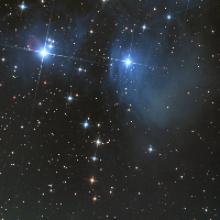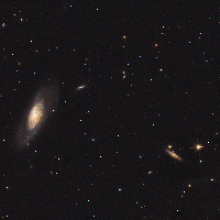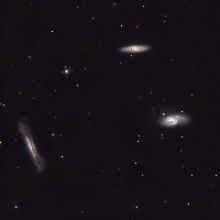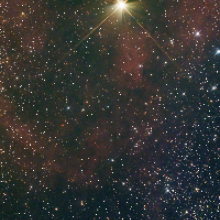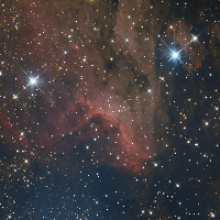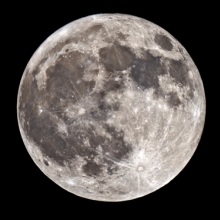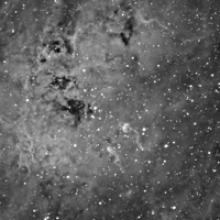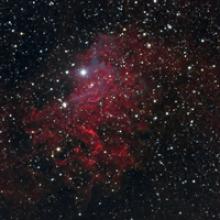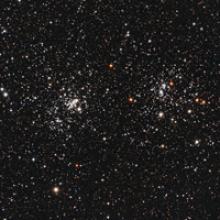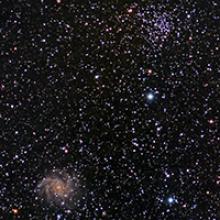Astrometry.net job: 7485196
RA center: 03h46m53s.8
DEC center: +23°48′46″
Pixel scale: 0.958 arcsec/pixel
Orientation: 24.332 degrees
Field radius: 0.566 degrees
Resolution: 3008x3008
Astrometry.net job: 7481841
RA center: 12h17m12s.5
DEC center: +47°18′03″
Pixel scale: 1.186 arcsec/pixel
Orientation: 5.019 degrees
Field radius: 0.636 degrees
Resolution: 2623x2833
Basic astrometry details
Astrometry.net job: 7465788
RA center: 11h19m54s.5
DEC center: +13°14′16″
Pixel scale: 1.187 arcsec/pixel
Orientation: 99.941 degrees
Field radius: 0.656 degrees
Astrometry.net job: 7444632
RA center: 21h06m18s.0
DEC center: +44°11′09″
Pixel scale: 1.187 arcsec/pixel
Orientation: 130.147 degrees
Field radius: 0.530 degrees
Resolution: 2231x2317
The Pelican Nebula (also known as IC 5070 and IC 5067) is an H II region associated with the North America Nebula in the constellation Cygnus.
The nebula known as IC 410 is home to a pair of intriguing structures popularly known as the "tadpoles." These are clumps of gas and dust left over from the formation of the cluster, and are likely forming yet new stars within them.
The Flaming Star Nebula (also known as the IC 405, SH 2-229, or Caldwell 31) is an emission/reflection nebula in the constellation Auriga, surrounding the bluish star AE Aurigae.
The Double Cluster (Caldwell 14) is the common name for the naked-eye open clusters NGC884 and NGC869 (often designated Chi Persei and H Persei, respectively), which are close together in the constellation Perseus.
NGC 6946, (also known as the Fireworks Galaxy, Arp 29, and Caldwell 12), is an intermediate spiral galaxy about 18 million light-years away, in the constellations Cepheus and Cygnus. It was discovered by William Herschel on September 9, 1798.
